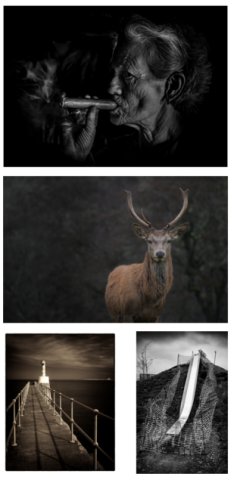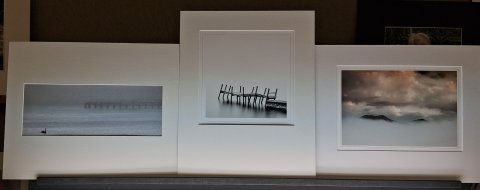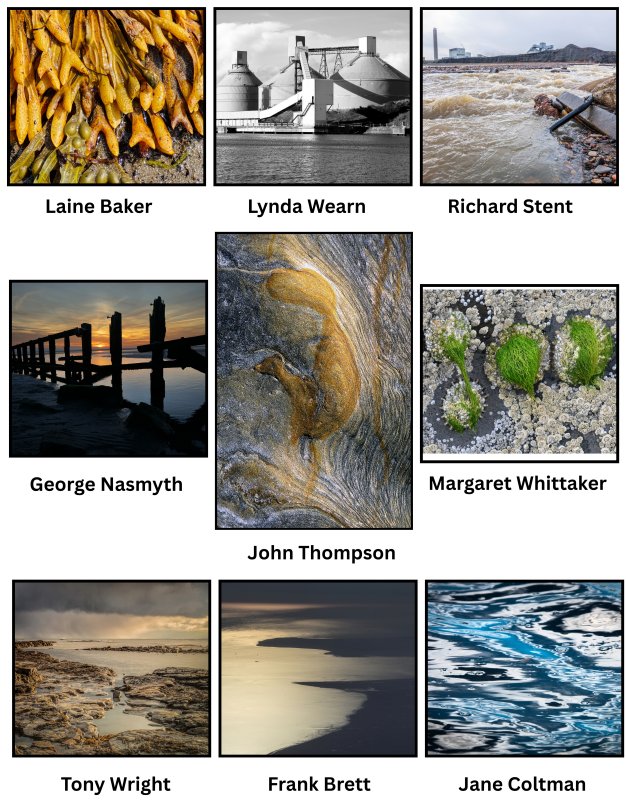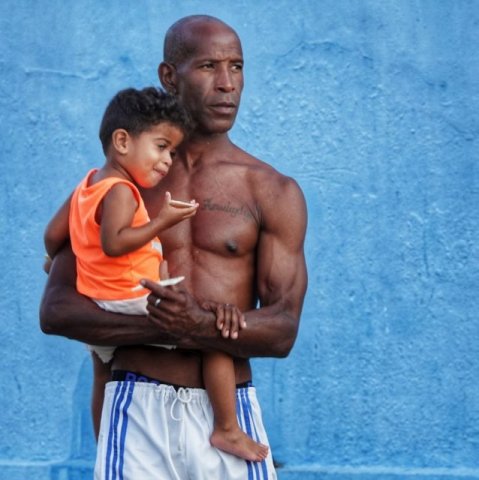|
Meeting Reports 2025-26 Season
29th October 2025
Linda Golightly LRPS - Photographic Critique, the gift that keeps on giving.
The talk began by making a clear distinction between criticism and critique, in the sense that critique is a process that helps the photographer to identify their intent in making a picture and to be aware of all the things that might help them to convey both what they saw and how it makes them feel to an independent observer. Criticism can be constructive but often comes with the premise that there is something wrong with an image. In fact, different images have more appeal than others to each of us and it can be useful to know what someone who has no photographic experience or “know how” feels about your image. First and foremost, critique must involve the author of the work, it is a two-way conversation and helps them to see what works well and what doesn't, and to learn how to rapidly apply that knowledge when a photographic opportunity arises.
There is a lot of overlap between criticism and critique and when an analysis is applied to any photographic image there is an implied criticism, and this inevitably gives rise to debate and disagreement. However, I think there was a consensus that if our aim is to both improve our own work and to help others to do the same, critique is important. Linda’s talk had brought that out.
George Nasmyth
1st October 2025On 1st October Veronica Congleton visited Alnwick & District Camera Club to judge the 1st Open PDI competition. A total of 48 digital images had been entered by members, and these covered a wide range of subject matter, captured in a variety of styles. Two images were Commended; 'Left Behind By A Friend' by Tony Wright and 'Collecting The Pollen' by Richard Stent. John Thompson's 'Skimming' was Highly Commended, as were 'Crossrail Place' and 'Through A Low Arch' which were both by George Nasmyth. 4th place was awarded to 'No Play Today' by Michael Mundy, a monochrome image depicting a childrens' slide. 3rd place want to 'Amble Beacon' by Tony Broom, a tinted monochrome image of the view towards the beacon at Amble. In 2nd place was 'Stand Off' by Frank Brett, featuring a stag standing in front of trees. The winner on the night was 'The Smoker' by Jane Coltman, an excellent monochrome portrait of a cigar smoker with some wonderful lighting. Thanks to all members who entered images and made this such an enjoyable competition, and thanks to Veronica for taking the time to review the images for sharing her thoughts and insightful comments. Report by Dave Dixon |
 |
24th September 2025The annual Print Knockout competition is a lighthearted evening when members bring in up to 4 prints each to compete against each other for the best print. Two images are placed on the lightbox and there is a show of hands for each one, the one with the most votes goes through to the next round. 44 prints were entered this time so several rounds took place before the final 3 were chosen. Members then voted for the one they felt was the best so we ended up with a first, second and third place. The competition was led by our President Laine Baker and our Chairman Jane Coltman who managed proceedings very well including the counting! There were many different images so it was difficult to choose which was the best one – subjects included birds, landscapes, seascapes, insects, buildings, people, trees, flowers and castles and both colour and mono images were represented. All of the prints were of a high standard ! The outright winner was David Burn’s atmospheric shot of a ramshackle bridge disappearing into the water. In second place was Richard Stent’s misty image of a jetty in Berwick with a lone swan in the foreground. The third place was Tony Wright’s shot of mountains emerging from the mist with a very impressive sky overhead. Well done to all 3 winners! Report by Jackie stent |
 |
17th September 2025
Gerald Chamberlin DPAGB EFIAP - Invisible Light, Infra red photography
The talk began with a description of the lecturer’s own journey into infra red photography. Light is electromagnetic radiation within which is a visible spectrum which ranges in wavelength from blues at a wavelength of 400 nanometres (nm) to reds at 680 nm. Beyond the visible spectrum with longer wavelength are infra-red then micro-waves and radio-waves. Before the advent of digital photography, some enthusiasts had developed film that was sensitive to infrared light, which was very tricky to use and involved complex processing. Having briefly. Immersed himself in this type of imaging he had a yearning go back to it, after the initial enthusiasm for digital media. Rather than return to film there are two options open to the photographer who wants to use infra-red (IR) with a digital sensor. The first is neither cheap nor easy because it involves filtering out all but IR light in front of the lens which is expensive, and because so much light is removed it usually requires very long exposures. There is an alternative which is filtering the light detected by the camera sensor by removing the existing IR filters and substituting new ones which only allow light in the IR wavelength. This is much easier to manage with a mirrorless camera, where the image in the viewfinder is what the sensor is seeing, which doesn’t happen with an SLR. Gerald acquired a secondhand Fujifilm camera and had the sensor adapted. There is a choice of filtration settings but probably one of the easiest to use is 720nm which gives a predominantly black and white image. It is equally important if available to switch off auto white balance and turn on a custom white balance which should be set to a green background. Foliage in IR black and white photography appears white because the foliage emits a lot of IR, if you use auto white balance you will get red monochrome images - which can be managed with some difficulty in post processing, but it is much better to get this right in the camera if you can. Another problem is hot spots which are caused by the lens and appear to be less problematic with prime lenses than zoom lenses which many of us have as our standard lens.
The talk then progressed to looking at a wide variety of images obtained using IR. One rule which probably seems counter intuitive to most landscape photographers is that some of the best IR images are obtained in bright sunlight in the middle of the day. We saw a wide variety of images some of which had colour added during post processing, often to a specific layer in photoshop. The variety of images was wide from alliums in a churchyard to portraits that demonstrated a very delicate feature that seems to be exclusive to IR which is the porcelain complexion. Other sources included a sculpture park (Jupiter) just south of Edinburgh and images of decay of buildings old vehicle and machinery. A live example of adding colour during post processing was then given using a paintbrush tool in Photoshop.
It was an excellent talk and if you have been thinking about getting into IR photography it provided a lot of useful information about what it will do, how to do it, and some of the pitfalls.
Report by George Nasmyth
10th September 2025It is to be hoped that guest speakers at Alnwick Camera Club inspire members and this was certainly the case last season when photographer David Southern showed his beautiful shoreline images. On the first members’ night of the season, eight club members showed their own shoreline photos and this resulted in a very enjoyable evening for everyone. Laine Baker’s images were taken at Seaton Point on her mobile phone, giving her the opportunity to take some superb close-up images – not always an easy task when you are there with two dogs waiting for a ball to be thrown! Richard Stent’s images showed Lynemouth beach that has undergone a huge clean-up which removed lots of industrial debris and pictures from Fontburn Reservoir where the water levels were so low you could see the root system of the trees along the shore – fascinating. Frank Brett included images from the south coast which showed a variety of subject matter. Deckchairs blowing in the wind and shimmering silver light on the water are just two of his images that spring to mind. The early bird definitely catches stunning photos as proved by George Nasmyth and his images from Morecombe Bay and these were followed by a series taken closer to home at the Northumberland coast. Margaret Whittaker entertained us with a series of vibrant pictures taken at Embleton and Boulmer. Beautifully coloured seaweed and miniscule barnacles captured by Margaret and often first seen by her husband or ’spotter’ John. Lynda Wearn showed what a diverse photographer she is by showing a series of images with great variety of subject matter and locations – all expertly captured. Tony Wright’s photographs were quite simply beautiful. They showed his mastery of handling light and his skilful handling of composition. Technically excellent, often taken with a tilt-shift lens, but also full of atmosphere. Jane Coltman showed images taken during just one visit to Seaton Point – sometimes the photos just happen when the light is right, and the photographer is in the right mood too. Within the region’s photographic community, Spittal Rocks are very well known - the wonderful swirling patterns and colours in the sandstone being a favourite subject for many a camera person. But one of the first people to recognise their potential was John Thompson who showed his excellent panel of prints featuring the rocks which gained him his prestigious Associate of the Royal Photographic Society award. The word for seeing people or objects in abstract images is pareidolia and in the image seen here John succumbs to that as he has titled it Squirrel! All in all an excellent evening thanks to all who participated. Report by Jane Coltman |
 |
3rd September 2025Tradition dictates that Chairman’s Night starts the season at Alnwick and District Camera Club. This season, the incoming Chairman is Jane Coltman who describes herself as a photographic ‘Jack of All Trades’ – taking pictures of anything and everything. But this chairman started off with a slightly unusual subject matter... death. Jane is not the only photographer to have a fascination with religious memorials and her first photographs included images from cemeteries in Romania and Cuba where images of the deceased are often included in memorials. This led Jane to explore photographs in an old family album. These took the form of cartes de visite and the larger cabinet cards and revealed that there were at least seven photographic studios in Alnwick, all kept busy producing what was the social media of the day. After looking at death Jane changed her focus to life, showing a selection of her favourite people pictures, declaring that people photography really was her favourite photographic genre - not a surprise considering her former life as a press photographer. To ensure the members left with a smile on their faces Jane finished the evening with an audio-visual presentation about dogs - all shapes, sizes and expressions - great fun! Report by Jane Coltman |
 |
Website © 2007-2025 Alnwick & District Camera Club
Copyright on photographs belongs to the photographer